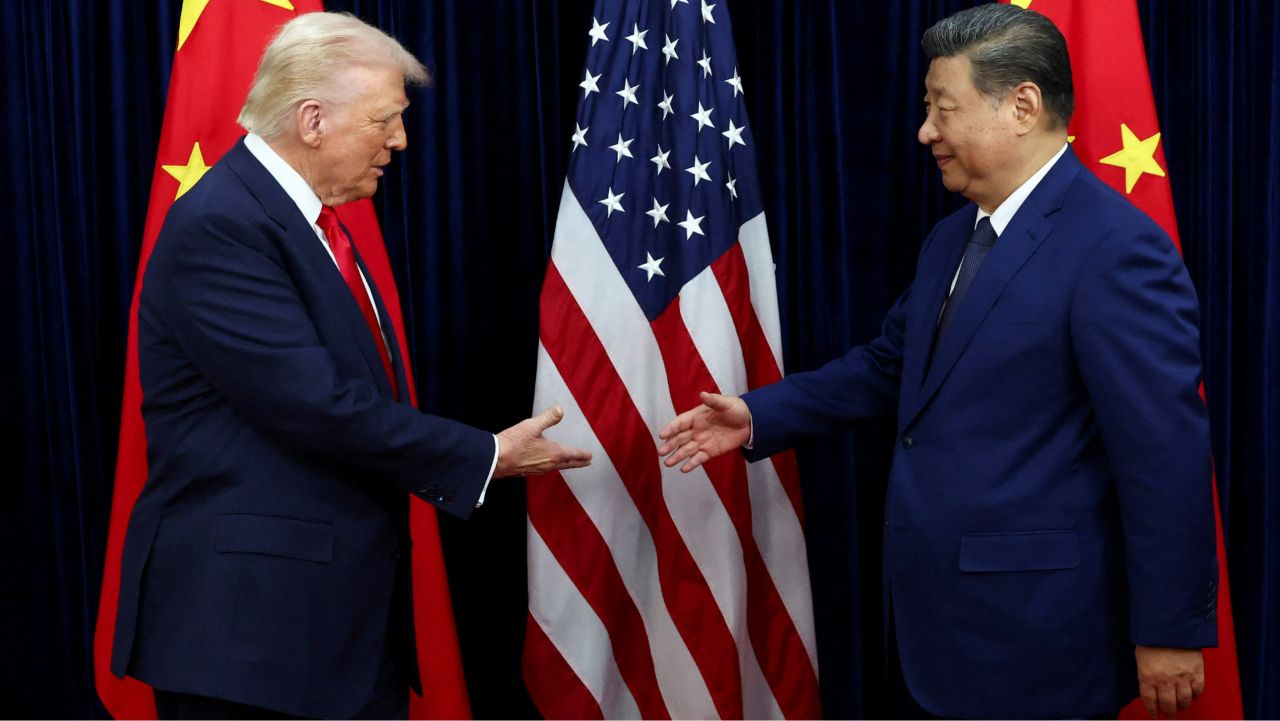South Korea, October 30, 2025 - President Trump and China's Xi Jinping for the first time both publicly addressed more details of their emerging tariff and trade truce agreed to in South Korea. Trump floated further tariff reductions if China upheld its parts of the deal, while Xi warned against "breaking supply chains."
Trump specifically floated eliminating fentanyl-related tariffs on China if it worked to stop the flow of exports from the country.
"As soon as we see that, we'll get rid of the other 10%," Trump told reporters.
The agreement struck between Trump and Xi came after months of chaos and confusion, putting on ice a trade war between the world's two largest economies.
Here are some key details we know about the thaw:
The US tariff on goods related to the production of fentanyl will drop from 20% to 10% with a promise China would work "very hard to stop the flow." That means overall tariffs on Chinese goods will be cut to 47% from 57%.
- China will pause controls on its exports of rare earth minerals.
- The US will mediate talks between Beijing and Nvidia's (NVDA) CEO Jensen Huang over China's use of restricted chips.
- Trump said China would purchase more US energy as part of a wider trade truce, and hinted at an unspecified transaction involving Alaskan oil and gas.
- China will resume buying "tremendous amounts" of US soybeans "starting immediately," Trump said.
Despite questions about the truce's ultimate durability, the moment represents a milestone for the US and China after Trump amped up trade threats against China almost immediately upon returning to office, rattling markets and unnerving investors.
TikTok & Tech Controls
- TikTok Deal: China signaled a softened stance on ByteDance’s U.S. divestment, potentially paving the way for a resolution.
- Export Controls: China successfully delayed a U.S. rule that would have blacklisted 20,000+ Chinese firms from accessing sensitive American technologies.
Strategic Implications
- China’s Positioning: Xi remained in South Korea for the APEC summit, promoting China as a champion of globalization, while Trump returned to a politically gridlocked U.S.
- Deal Timeline: A formal trade agreement could be signed as early as next week, according to U.S. Treasury Secretary Scott Bessent.
Will this have an impact on the supply chain?
Lower Tariffs Improve Logistics Costs
- The U.S. reduced tariffs on Chinese goods from 57% to 47%, lowering export costs from China to the U.S.
- Fentanyl-related tariffs were also cut from 20% to 10%, easing the flow of pharmaceutical and chemical products.
Stabilization of Rare Earth Supply
- China’s pause on rare earth export controls is expected to benefit manufacturers of semiconductors, batteries, and EVs.
- Japan and ASEAN countries may also benefit indirectly from more stable access.
Semiconductor Supply Chain Rebuilding
- The U.S. will mediate talks between China and NVIDIA, potentially reshaping the AI and digital product supply chain.
Expansion of Energy and Agricultural Trade
- China’s resumed purchases of U.S. energy (including Alaskan oil and gas) and soybeans will boost global logistics in these sectors.
Digital Supply Chain Stability
- China’s softened stance on ByteDance’s U.S. divestment and delayed export controls reduce uncertainty in digital platforms and data flows.



